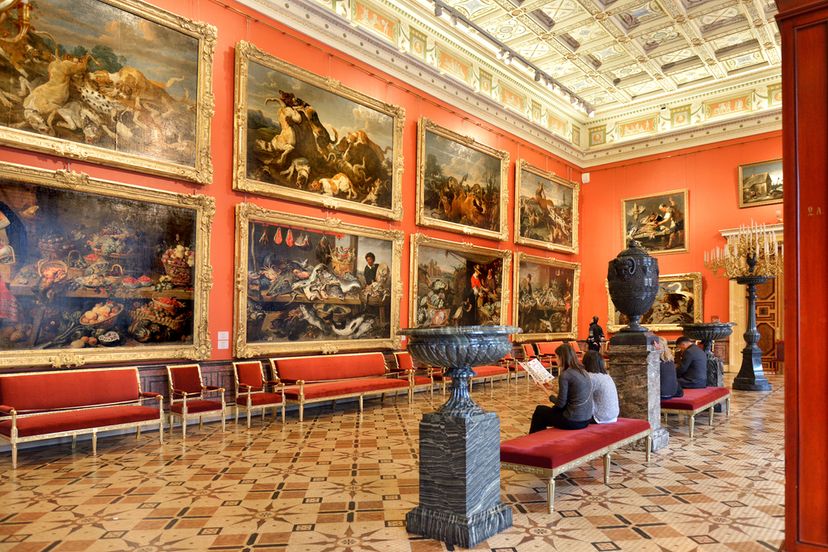
So much more than décor, artistic works have long been used as modes of self-expression and cultural identity, as well as tangible historical tools that visually display the progression of society throughout the ages. Through changes and innovations in technique, mediums and subject matter, a piece of art has the ability to transport the viewer to different points in time, or alternatively (in the case of the modern movement) to different realms of consciousness, and provide some insight into a highly subjective human endeavor. For those of you that want to revel at works that are classical, weird and everything in between, here are the world’s top 10 must-see galleries.
Advertisement
12. Auckland Art Gallery – Auckland, New Zealand
Since opening in 1881, Auckland Art Gallery remains the largest gallery of fine and visual art in New Zealand, currently holding over 15,000 works dating from the 11th century to the present. What started out as a small collection of pieces by European masters, has now grown into the most comprehensive collection of New Zealand art, as well as distinguished pieces by Maori and Pacific Island artists. Art lovers will love how this smaller gallery contrasts with the (though beautiful) often overwhelming scale of the famous European galleries, and appreciate the chance to admire how such an architecturally split environment (the building is part renaissance and part modern) beautifully showcases such a diverse range of works.
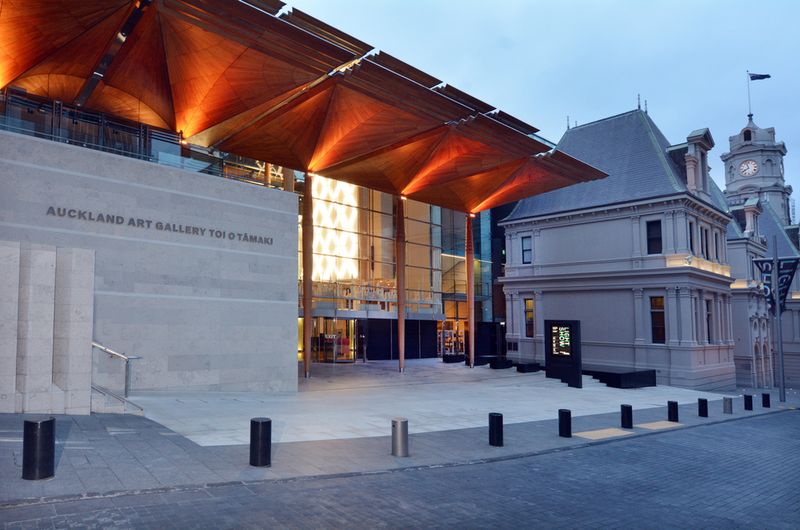
11. Rijksmuseum – Amsterdam, Netherlands
Translated literally, Rijksmuseum means “state museum” and is just that, chronicling the development and progression of Dutch art and history through its vast collection of paintings, sketches, photography and applied arts. The newly updated gallery, which reopened in 2013 after a 10-year renovation, offers a unique art-viewing experience, displaying all types of pieces (i.e. paintings, sculptures, furnishings, etc) together in galleries organized by time period. Though holding a small amount of international art, including a dignified collection of Asian art, it is the works hanging in the Gallery of Honor that are the highlight of the museum. It in this corridor that you will find the masterpieces of the Dutch Golden Age of painting, including Vermeer’s The Milkmaid and Frans Hals’ Portrait of a Couple, all leading to the gallery’s most treasured piece: Rembrandt’s Night Watch.
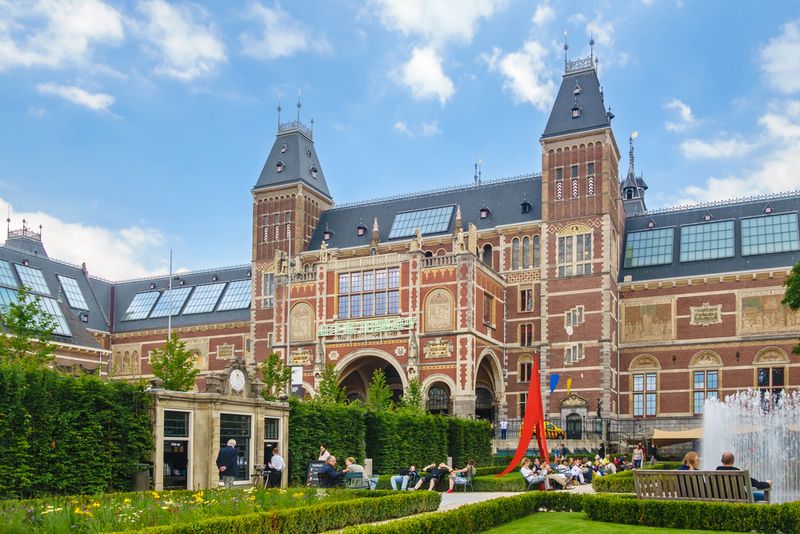
10. Prado Museum – Madrid, Spain
Established in 1819, the Museo del Prado in Madrid contains the single largest Spanish art collection in the world, along with notable European fine art works of the 12th-19th centuries. In fact, in addition to displaying works by Francisco de Goya, Diego Velazquez and El Greco, the Prado now also houses the largest collection of art by the Italian masters outside of Italy. A stroll through this national art museum will reveal such well-known pieces as Fra Angelico’s The Annunciation, Rubens’ The Three Graces, and Goya’s The Third of May: The Execution on Principe Pio.

9. National Museum of Modern and Contemporary Art – Seoul, South Korea
Composed of several branches in the Seoul area, the National Museum of Modern and Contemporary Art was opened in 1969 as the country’s only gallery devoted solely to works from 1910 and onwards. The main branch, located in Gwacheon, currently houses over 7,000 works featuring well known Korean artists such as Ko-Hui Dong, Ku Boh-Ung and Kim Whan-Ki, as well as a sizeable collection of international artists like Andy Warhol, Joseph Beuys and Marcus Lupertz. Art lovers will also appreciate the gallery’s commitment to discovering and showcasing the works of artists new to the contemporary art scene in its many temporary events and exhibitions.
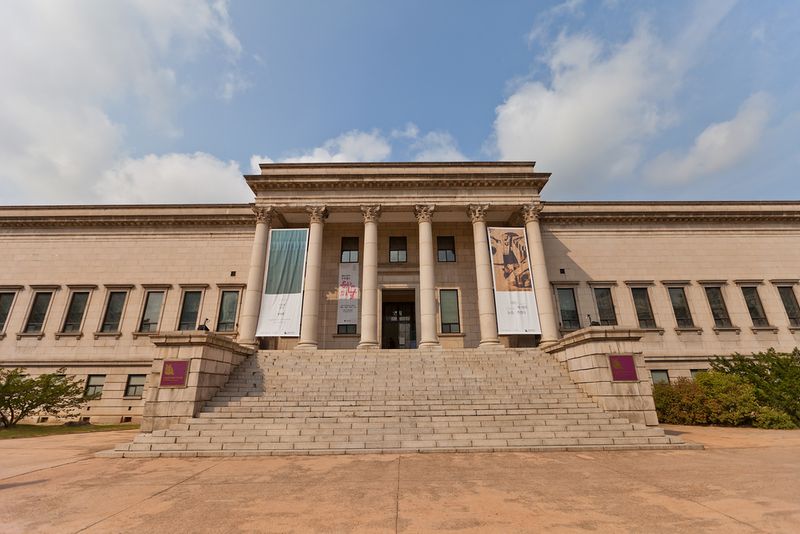
Advertisement
8. Musee D’Orsay – Paris, France
Opened in 1986 in the former D’Orsay railway stations (originally built for the 1900 World Exhibition), the gallery contains a vast selection of fine art pieces created between 1848 and 1914. The collection is comprised mainly of works from the Louvre, the Musee du Jeu de Paume which became devoted exclusively to Impressionism in 1947 and the National Museum of Modern Art, which in 1976 trimmed its collection to only include pieces by artists born after 1870. Today, the gallery houses six unique collections in several artistic disciplines (paintings, sculpture, objets d’art, photographs, graphic arts and architecture) and is home to Renoir’s Bal du Moulin de la Galette, Manet’s Olympia and Cezanne’s The Cardplayers.

7. The National Gallery – London, England
The National Gallery in London’s Trafalgar Square holds the country’s national collection of art (it belongs to the people, so admission is free!) and consists of over 2,000 Western European paintings dating from the medieval period to the 19th century. The national collection was established in 1824 with the English government’s £57,000 purchase of John Julius Angerstein’s 38-piece personal collection. Originally displayed at Angerstein’s house, the Parliament agreed to construct a dedicated gallery building in 1831, doors opened at the current location in 1838. The collection greatly expanded in the early 1860s under director Charles Eastlake, and now contains several must-see works such as Van Gogh’s Sunflowers, Titian’s Bacchus and Ariadne and Monet’s Bathers at La Grenouillere.
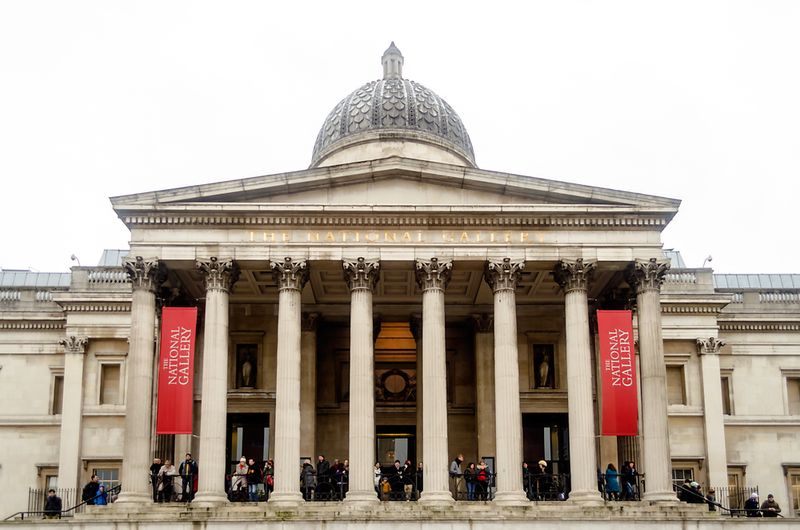
6. Tate Modern – London, England
Another London staple, the Tate Modern is one of four museums in the Tate family and, as its name suggests, houses the UK’s national contemporary and modern art collection (dating from 1900 and later). Housed in a converted former power station in the banks of the river Thames, the gallery offers a unique experience for art lovers, displaying pieces in thematic zones rather than in typical chronological order. The themes currently on exhibit are Energy and Processes, Structure and Clarity, Poetry and Dream and Making Traces, and feature works by Picasso, Rothko and Rothschild.
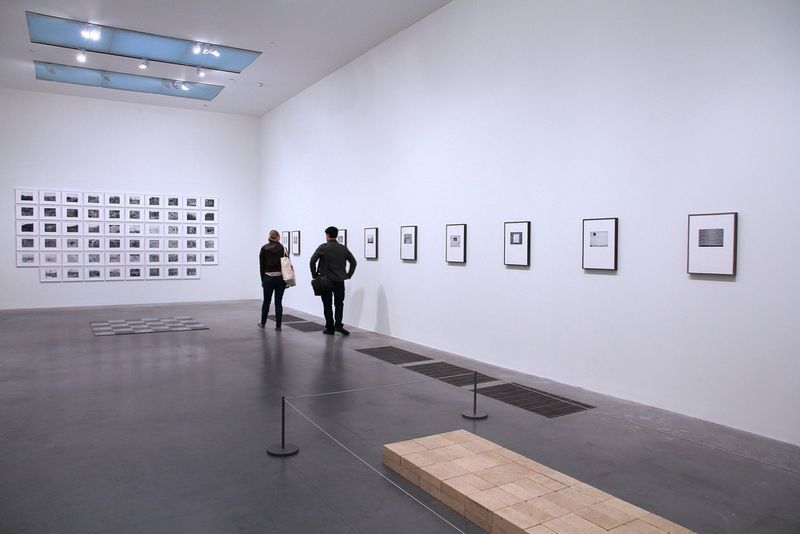
5. Uffizi Gallery – Florence, Italy
An unlikely home for fine art masterpieces, the Uffizi Gallery was originally commissioned by Cosimo de Medici in 1560 to hold the offices of the Florentine Magistrates and Judiciaries. Today, this original purpose is especially evident in the gallery’s cramped spaces which were built to accommodate just a few individuals, not the thousands that now flock through its doors each day. Nevertheless, the Uffizi is one of Italy’s best attractions, containing 45 halls that chronologically display works from the 13th to 18th centuries. Highlights of the collection are Botticelli’s The Birth of Venus and Michelangelo’s Doni Tondo, and also not to be missed are the gallery’s iconic Vasari Corridor and Octagonal Tribune designed by Bernardo Buontalenti.
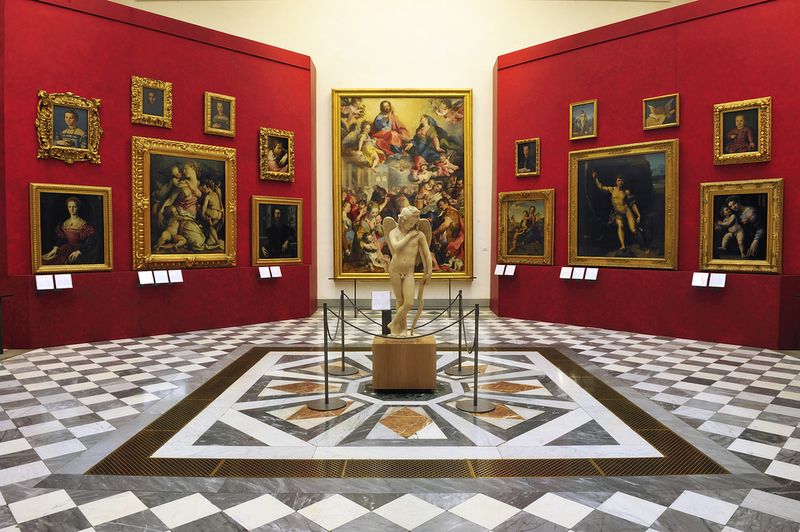
4. Vatican Museum – Vatican City, Italy
Dating back to 1503, today’s Vatican Museum is comprised of a combination of pontifical museums and galleries, whose acquisitions began with Pope Julius II’s collection of sculptures. The complex now houses quite a large number of museums, exhibiting everything from Christian Antiquities to ancient tapestries and mosaics to religious and secular relics. The museum also contains a vast painting gallery (Pinacoteca) which opened in 1932 and consists of over 400 paintings displayed more or less chronologically from the 12th to 19th centuries. Undeniably, the largest draws of this museum are the incomparable pieces found within the Sistine Chapel, where visitors can admire the works of Botticelli, Ghirlandaio, Rosellini and Signorelli, as well as the world famous ceiling masterpiece by Michelangelo.
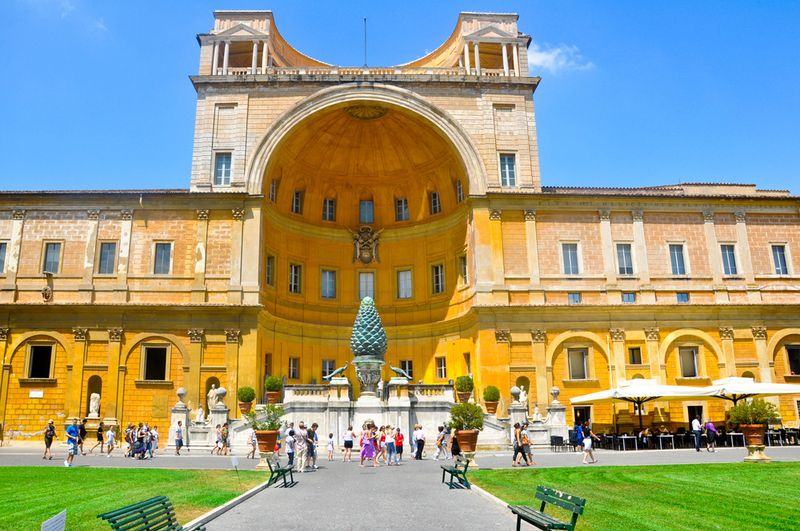
Advertisement
3. State Hermitage – St. Petersburg, Russia
As one of the world’s largest museums at over two million square feet, and housing over three million items, the State Hermitage Museum complex holds an astounding collection of fine art that is a must see for any art lover. Housed in 120 galleries in four of the Hermitage’s main buildings—the Winter Palace, Great Hermitage, Small hermitage and New Hermitage—visitors will find the works of Matisse, Degas, Titian, and Rembrandt. The collection, which was established in 1764 by Catherine the Great, now consists of over 600,000 works of art and includes such famous paintings as Da Vinci Benois Madonna, Matisse’s Dance and Rembrandt’s Flora.
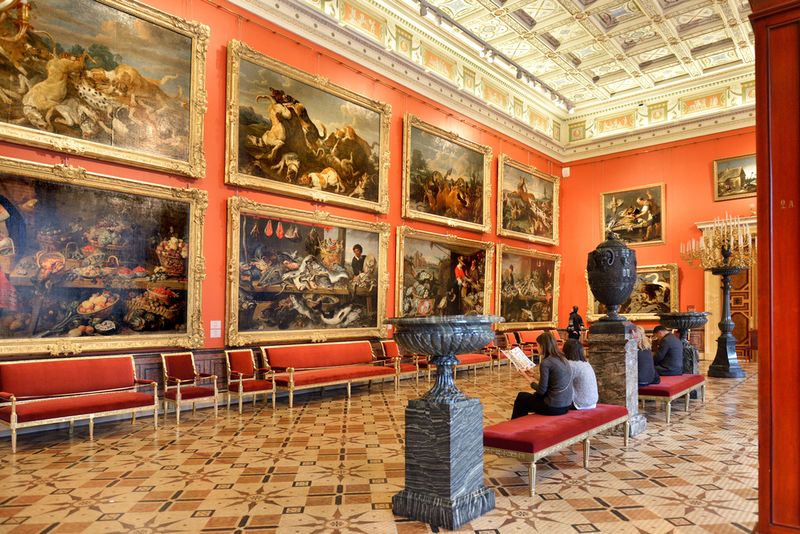
2. The Metropolitan Museum of Art – New York City, USA
The largest gallery in the United States, The Metropolitan Museum of Art is one of the biggest attractions in NYC, drawing over six million visitors each year. And once you’ve seen it, it’s easy to see why—the current collection includes over 2,500 European paintings, the largest Egyptian art collection (outside of Egypt) and the world’s largest collection of American artistic works. The museum also boasts extensive holdings in African, Asian and Islamic Art, as well as an impressive amount of antique weapons, armor and costumes. With over two million works housed in over two million square feet of space, the Met has something for everyone, making it a must-see for art lovers of all styles and periods.
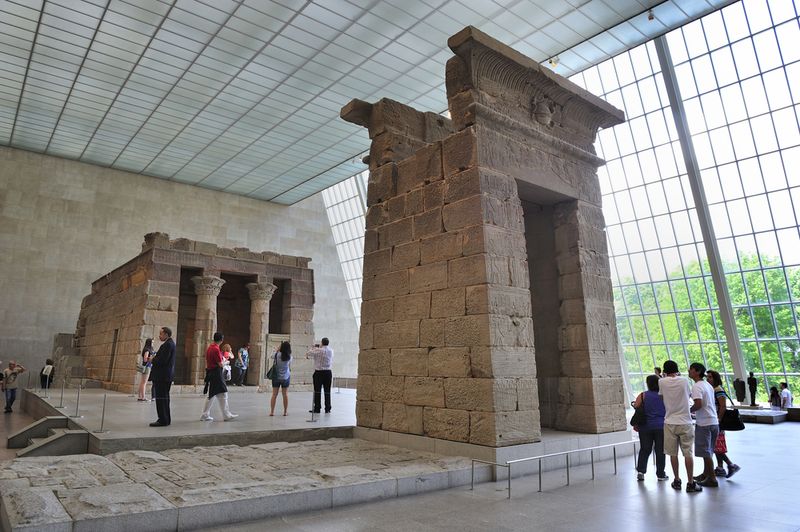
1. The Louvre – Paris, France
As the largest and arguably most well-known art gallery in the world, the Louvre currently houses over 35,000 artistic works and draws over eight million visitors a year. With a history dating back to the 12th century as a city fortress, and later, royal residence, the galleries of the Louvre were not used for art exhibition until 1699 when the artist residents held their first “salon”. The Museum Central des Arts (located in the Salon Carre and Grande Galerie) was opened to the public in 1793 with a growing collection of paintings that eventually expanded into other parts of the building. The site became exclusively devoted to culture in 1882, and today consists of over 650,000 square feet of exhibition space holding some of the world’s most renowned masterpieces, including Da Vinci’s Mona Lisa, Delacroix’s Liberty Leading the People and Durer’s Self Portrait.
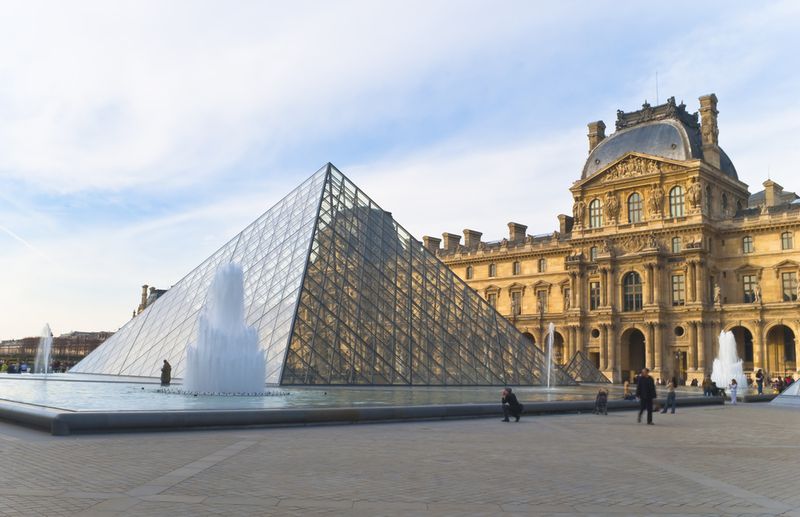
Advertisement